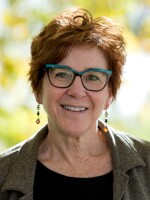Updated at 4:12 p.m. with clarification — When early photos of the 2014 Ferguson protests flashed across photographer Eric Pan’s phone and computer screen, he mainly saw active confrontation — and wondered if there was more to the story.
Pan brought his camera to Ferguson, where protesters took to the streets after then-officer Darren Wilson, who is white, shot and killed Michael Brown, a black man. Three years later, he joined marches against a judge’s acquittal of former St. Louis police officer Jason Stockley, who is white, in the death of a black man, Anthony Lamar Smith.
Pan’s perspective on both protests is the subject of an exhibition opening Saturday at the Griot Museum of Black History and Culture called “Civil Unrest in Review.”
He spoke with St. Louis Public Radio about his experiences and the exhibition.
Nancy Fowler: You assert that your work offers an alternative to protest photos that have been widely shared on both social and mainstream media. How are yours different?
Eric Pan: They never showed any images of peaceful protest. They only showed what got people views — the burning buildings — they didn't know that there was a whole slew of peaceful protests.
[It was] almost a celebration when I went up there; it was like a festival. There's drums, there's music, there's food. People were singing and clapping and dancing and being together: white and black people and Asian people — you know I'm Asian-American, I'm Chinese-American but people have always treated me as a sort of perpetual foreigner because of how I look.
Clarification: This story contains inaccurate observations from the photographer on media coverage of St. Louis area protests that St. Louis Public Radio did not challenge. Our coverage of dissent in Ferguson and St. Louis and that of other media outlets, such as the Post-Dispatch, did include photos of peaceful protests. We regret not acknowledging that.
Loading...
Fowler: You brought a couple of images. So here, we have maybe hundreds of people lying down in the street. Tell me about this photo. When was this taken?
Pan: So this was taken during the Stockley protest in front of the police station, police headquarters downtown. This is what they call a die-in. This is where they lay down to symbolize the bodies of innocents.
Why I took this image was because … in historical textbooks about the civil rights movement, you see a lot of black people protesting for civil rights but you don't see a lot of white people doing at the same time. You see sprinkles every now and again of images in these old photos from the '60s of white people protesting with black people, but you notice this crowd [in this photo] is almost entirely white.
If you want to build these communities together you’ve got to ... show people that it's not just like black versus white … white people were in this fight as well. Because if you improve the quality life for one segment of the population, everyone's quality of life improves — this is how it works.
I think it's also an act of defiance towards police from white people. You know, they're laying right in front of the police headquarters.
Fowler: Was there a moment when you had to choose between being a protester and being a photographer?
Pan: Yeah. I mean, I wanted to lay down in that picture. I want to lay down. And I felt that it was more important to take a picture and show people what it's like, what's happening versus me actually actively participating.
You know many of these images I've captured are me protesting and then running ahead, turning around and taking a picture … I mean it's a back-and-forth type of thing. One minute you're … in the crowd, chanting along and the next minute you're taking pictures.
Follow Nancy Fowler on Twitter: @NancyFowlerSTL






